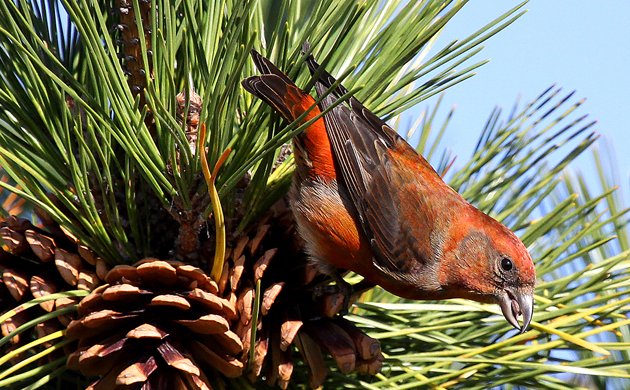
Ron Pittaway has published his winter finch forecast for the winter of 2013-2014. Though Ron is based in Ontario his reports are eagerly anticipated by birders across the northeastern United States and eastern Canada because it takes into account a vast array of data to figure out which irruptive species might show up where. Below is a slightly elided version which removes some of the Ontario-specific information and leaves just the meat of the forecast. Photo illustrations by yours truly have been added. For a full version of the forecast, head here. Enjoy, and good luck finding winter finches this year – you’ll need it! (And click on any of the photos below to be taken to the story of when the photo was taken.)
GENERAL FORECAST
This is not an irruption (flight) year for winter finches, but there will be some southward movement of most species into their normal winter ranges. Ontario’s cone crops (except white pine) and deciduous seed/berry crops are generally above average to excellent. Very good to bumper spruce cone crops extend across Canada’s boreal forest from Yukon (bumper) east to Atlantic Canada, with rare exceptions. Cone crops are good to excellent (poor on white pine) in central Ontario and Laurentian Mountains in southern Quebec with heavy crops extending east through the Adirondack Mountains of New York and northern New England States. Birch, alder and mountain-ash berry crops are good to excellent across the boreal forest. Most reporters said that finches were thinly dispersed in their areas with few concentrations noted, except for southern Yukon which had abundant Pine Siskins this past summer. Finches this winter should be widespread given the almost continent-wide extent of the seed crops. Limited movements southward to traditional wintering areas such as Algonquin Park are expected. See individual species forecasts below for details on each species. Three irruptive non-finch passerines whose movements are linked to finches are also discussed. Please note that the forecast applies mainly to Ontario and the Northeast.
FINCH TREES
The key trees affecting finch movements in the Northeast are spruces, pines, hemlock, birches and mountain-ashes. Other trees normally play minor roles unless their crops are bumper. This year many tree species have spotty or patchy crops with some trees being heavy with cones or fruit while nearby trees of the same species have few or no cones or seeds. A similar patchy distribution is evident on a larger scale, with stands heavy with cones or seeds versus stands in the next township or county that have scanty crops.
INDIVIDUAL FINCH FORECASTS
PINE GROSBEAK
Most Pine Grosbeaks will remain in the north this winter because mountain?ash berry crops are very good to bumper across the boreal forest from Alaska to the island of Newfoundland. European mountain-ash, crabapple and buckthorn have heavy berry crops in southern Ontario and elsewhere so if grosbeaks wander south they will have plenty of food. They prefer sunflower seeds at feeders, often feeding on spilled seeds on the ground.
I had a great time in the Adirondacks last winter, especially when Pine Grosbeaks cooperated.
PURPLE FINCH
In most years Purple Finches migrate south of Ontario in the fall, but this winter some should remain in the north where tree seed crops are abundant. They will likely visit sunflower seed feeders and be attracted to heavy berry crops on mountain-ashes, eating the seeds not the flesh. Similar to the Evening Grosbeak decline, Purple Finch numbers dropped significantly after 1980 as major spruce budworm outbreaks ended.
RED CROSSBILL
Small numbers are being reported in Algonquin Park and northern Ontario usually in pine stands. Red Pine cone crops are fair to good in many areas, but White Pine crops are poor with a few exceptions such as around Temagami just south of the boreal zone. Expect to see a scattering of Red Crossbills where pine, spruce and ornamental conifers have good crops. Red Crossbills comprise at least 10 “types” in North America. Each type probably represents a separate or recently evolving species. The types are usually impossible to identify without recordings of their flight calls. Matt Young (may6 at cornell.edu) of The Cornell Lab of Ornithology will identify types for you from recordings and this will help his research. Most Type 3 crossbills from last winter’s irruption have apparently returned to their core range in the Pacific Northwest. Matt says it is important to monitor the distribution of types in more “normal years” such as this winter. This crossbill rarely goes to feeders.
WHITE-WINGED CROSSBILL
Spruce cone crops are generally good to excellent from the Yukon east across the boreal forest to the island of Newfoundland. Large crops extend south into the northern states. White-winged Crossbills should be widely dispersed this winter given the enormity of the cone crops. Expect to see this crossbill in Ontario’s Algonquin Park, New York’s Adirondack Mountains and in the northern New England States. This crossbill usually feeds on native conifers with small soft cones such as white, red and black spruces and hemlock. It normally avoids the larger harder cones of pines. This crossbill rarely goes to feeders.
This juvenile White-winged Crossbill was very cooperative last winter out on the east end of Long Island.
COMMON REDPOLL
Most redpolls should stay in the north this winter because birch, alder and conifer seed crops are generally good across the boreal forest. Some redpolls should get south to usual southern parts of their winter range such as the Atlantic Provinces and Ontario’s Algonquin Park (Latitude 45.5), where redpolls have been recorded on 33 of 39 Algonquin Christmas Bird Counts. The rare “Greater” Common Redpoll (subspecies rostrata) from Baffin Island and Greenland is not expected in the south this winter.
HOARY REDPOLL
The rare Hoary Redpoll is usually found in flocks of Common Redpolls. It is not expected in the south this winter because this is not an irruption year for redpolls. The “Southern” Hoary Redpoll (exilipes) is the usual subspecies seen. “Hornemann’s” Hoary Redpoll (hornemanni) is a great rarity south of the tundra even during irruption years.
PINE SISKIN
Siskins will winter across the north because conifer crops (except white pine) are excellent. They should be attracted to heavy cone crops in southern Quebec’s Laurentian Mountains, New York’s Adirondacks and northern New England. Watch for siskins on spruce and hemlock. They prefer nyger seeds at feeders.
Last year we saw one of the biggest irruptions of Pine Siskins ever.
EVENING GROSBEAK
This big “eye-catching” golden grosbeak should visit sunflower seed feeders again this winter in Ontario and the Northeast. Numbers are increasing due to expanding spruce budworm outbreaks in northern forests. However, spraying to control budworms, if not already occurring in some provinces, will limit an increase in grosbeaks. Breeding success is higher in areas with budworm outbreaks because the abundant larvae are eaten by adults and fed to young. Evening Grosbeak populations peaked during the 1940s to 1980s when massive budworm outbreaks stretched across Canada. The last Algonquin Christmas Bird Count with very high numbers was the winter of 1984/85 when 1474 Evening Grosbeaks were found on the count (Birds of Algonquin, Tozer 2012).
THREE IRRUPTIVE PASSERINES
Movements of the following three passerines are often linked to the boreal finches.
BLUE JAY
Blue Jays move south in varying numbers every fall beginning in mid-September. This year expect a small to moderate flight along the north shorelines of Lakes Ontario and Erie because the acorn, beechnut, hazelnut and many soft mast crops are good to excellent across central Ontario and elsewhere. Interestingly, I found a Blue Jay feather stuck on a hazelnut north of Toronto on 11 August 2013. Good numbers of Blue Jays should visit feeders this winter in Ontario because many northern birds will not migrate south this fall.
RED-BREASTED NUTHATCH
No movement of Red-breasted Nuthatches this year reliably predicts that spruce cone crops are heavy in the boreal forest. This indicates a non-irruption year for finches, especially Pine Siskins and White-winged Crossbills which similarly specialize on conifer seeds, especially white spruce seeds. Some more southerly nuthatch populations may be permanent residents. We have Red-breasted Nuthatches year-round at our suet, sunflower and peanut feeders in Toronto and they annually bring their young to the feeders.
Red-breasted Nuthatches were everywhere last winter!
BOHEMIAN WAXWING
Most Bohemians will remain in the boreal forest this winter because mountain?ash berry crops are very good to bumper from Alaska to Newfoundland and Labrador. When feeding on mountain-ash berries, Bohemians and Pine Grosbeaks often occur together. The superficial resemblance of Bohemian Waxwings to female Pine Grosbeaks is striking and may be functional. If some Bohemians move south they will be attracted to abundant berries on European mountain?ash, small ornamental crabapples and buckthorn. Some are likely to occur in traditional areas such as Ottawa and Peterborough.
Here’s hoping you see a nice mixed flock of crossbills this winter though it does seem rather unlikely.
…












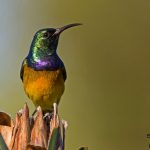


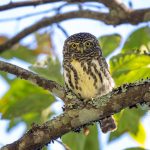
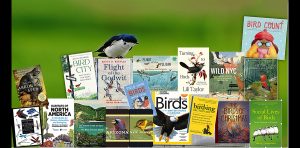
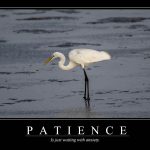
Very nice birds photos
really a great work
From whom did the Horneman’s Hoary Redpoll get It;s name?